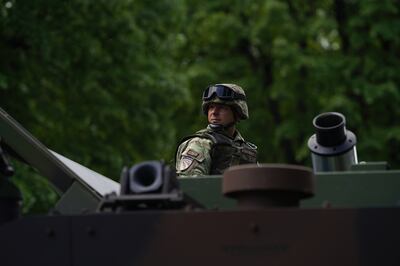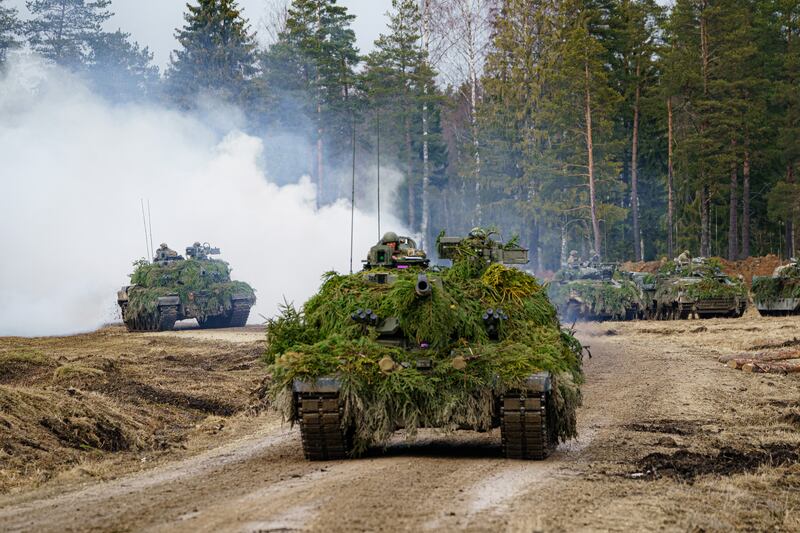Britain’s opposition leader has hinted at support for a major rise in defence spending to combat the growing threat from Russia.
Sir Keir Starmer urged the government to reverse its decision to cut 10,000 personnel from the armed forces at a time when Nato has a major conflict on its borders in Ukraine.
The Labour leader suggested that he could back a massive military cash rise to 3 per cent of GDP that would take Britain’s defence budget from £45 billion to £66 billion ($83bn), making it the third highest spender behind China and America.
There is growing unease in the Conservative Party at the potential cuts to British forces while war is raging on the continent.
Tobias Ellwood, chairman of the Commons defence committee, argued that the government had to “wake up” to Russian belligerence and called for the 3 per cent rise.
Asked if his party would support the Conservative's proposal Sir Keir said it would be considered.
“I do think the government is going to have to come back to Parliament and look again at defence spending and I know many Conservative MPs think that as well,” he told the BBC.
“I would also say the government at the moment is proposing cutting a further 10,000 from our armed services and I think they are wrong to do that and I would call on them not to do it.”
He added that there was a now a “clamour” for the government to rapidly review “defence spending and the defence strategy”.

Other countries in Europe have already promised to increase their defence budgets, particularly those bordering Russia.
Poland’s government stated last month that it would move from 2.5 to 3 per cent of GDP while doubling its personnel to 250,000 troops.
Germany has promised a one-off $112 billion rise but has yet to make a commitment to take its defence budget from 1.5 to 2 per cent of GDP.
Even before Ukraine a recent International Institute of Strategic Studies (IISS) report found that European defence spending has grown 4.8 per cent in real terms in 2021, “more than any other region” as a result of Russian aggression.
Britain announced a significant defence increase last year, but like many other countries it has seen a slide in defence finances since the 1950s when it accounted for 8 per cent of GDP.
Ben Wallace, the defence secretary, announced last March a cut of 4,000 soldiers to 72,500 in the British Army, the smallest it has been in 300 years.
Controversially the plan also involved reducing the number of tanks from 227 to 148 upgraded Challenger 3s. The Ukraine war has proven the requirement for heavy armour when used correctly.
Britain raised its defence spending to Kyiv on Tuesday by a further £300 million making a total of £500 million since the war began.
Sir Keir welcomed the announcement. “We support the provision of military equipment and the in principle position of all political parties that we stand up for Ukraine," he said. "Standing against Russian aggression is very important."







